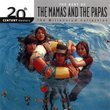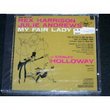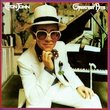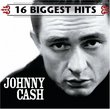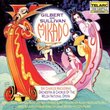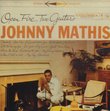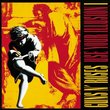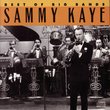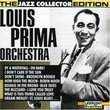| All Artists: Benny Goodman Title: Birth of Swing (1935-1936) Members Wishing: 1 Total Copies: 0 Label: RCA Original Release Date: 11/12/1991 Release Date: 11/12/1991 Genres: Jazz, Pop Style: Swing Jazz Number of Discs: 3 SwapaCD Credits: 3 UPCs: 078636103822, 035629060128, 078636103846 |
Search - Benny Goodman :: Birth of Swing (1935-1936)
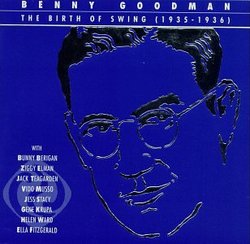 | Benny Goodman Birth of Swing (1935-1936) Genres: Jazz, Pop
As a phenomenon in popular music, the swing era can be dated from one night, August 21, 1935, when Benny Goodman's big band arrived to a tumultuous throng at Los Angeles's Palomar Ballroom, the young audience inspired by h... more » |
Larger Image |
CD DetailsSynopsis
Amazon.com essential recording As a phenomenon in popular music, the swing era can be dated from one night, August 21, 1935, when Benny Goodman's big band arrived to a tumultuous throng at Los Angeles's Palomar Ballroom, the young audience inspired by his broadcasts on an East Coast radio show that had already been cancelled. It would begin the greatest period of popularity ever achieved by a jazz style, and Goodman's was the band most responsible. All of Goodman's RCA recordings from this period are included in this three-CD set, which contains some of the popular songs of the day as well as much inspired jazz. Goodman's clarinet swirls elegantly through the music, and the horn sections are precise and swinging in arrangements by Fletcher and Horace Henderson and Jimmy Mundy. There are electric moments from Bunny Berigan's brief stay in the band, while Gene Krupa's drumming is a constant stimulus to swing. --Stuart Broomer Similarly Requested CDs
|
CD ReviewsTime machine on a disk RICHARD ARROYO | Zionsville, IN United States | 01/11/2001 (5 out of 5 stars) "I have been checking out Benny Goodman and Glenn Miller records since I was 12 years old from the public library. I turn 25 and finally have money to burn and I buy the Complete Benny Goodman CD set and I am in heaven. I put the first CD in and out comes "Hunkadola" with a sweet albeit cheesy Latin beat. Most of the first CD follows this trend until I hear "Santa Claus came in the Spring" and the sweetness and cheesiness finally get to me and I let out a big toothy grin. That grin did not leave my face until the last song of the third CD when Ella Fitzgerald sings "Did you mean it?" and a small tear rolls down my cheek and I say "yes, sweet voice, I loved all this music" Benny Goodman has way of growling on his clarinet that makes you feel like the sound is reaching in a grabbing your innards and twisting them. Listen to "Pick yourself up" (the theme for the Astair-Rogers movie of the same name.) and "Here's Love in your eyes" and you feel the growl in the former and sweetness in the latter. Read the liner notes, and listen to the all the songs again, and with the help with a glass of wine, or better yet a clean Martini in a comfortable chair, you feel like you were there with Benny, Fletcher, Bunny Berigan, Martha, and sweet, sweet Ella." Experience a musical phenomenon in this superb package! Ryan Harvey | Los Angeles, CA USA | 04/08/2004 (5 out of 5 stars) "Benny Goodman didn't invent the jazz style known as `swing.' Bands such as McKinney's Cotton Pickers, Duke Ellington and His Orchestra, Bennie Moten's Kansas City Orchestra, and Fletcher Henderson and His Orchestra had been swinging hard since the late 1920s. Even an all-white swing band, The Casa Loma Orchestra, had already made an impression on young listeners. But the title of this 3-CD collection, "Benny Goodman: The Birth of Swing," is close to being dead on the money. During 1935 and 1936, the years covered in these studio recordings, Benny Goodman and His Orchestra turned swing into a national phenomenon, and jazz reached its peak of popularity in America (never again would jazz be the popular music of the country -- a rather sad realization). Maybe it wasn't the `birth' of swing, but it was the birth of the swing movement.These CDs hold a treasure chest of American musical heritage, and every cut here, culled from studio sessions between April 1935 and November 1936, is a miniature gem of swing jazz. The Goodman band was hitting its stride in these years with a collection of great musicians (Gene Krupa on drums, Bunny Berigan on trumpet, Jess Stacy on piano, Helen Ward on vocals) and superb arrangers like Jimmy Mundy and Spud Murphy (who is still alive! I've met him!). But it was arranger Fletcher Henderson who gave the band the swinging Harlem style that made it so distinctive and made dancers' feet catch fire. After a popular stint on the radio show "Let's Dance," the band went on a cross-country tour that almost ended in disaster, until in August 1935 at the Palomar Ballroom in Los Angeles they became a smash hit and proceeded to conqueror the rest of the country. But these CDs show you how strong the band was before this major turning point, with pieces like "The Dixieland Band," "Get Rhythm in Your Feet," "Blue Skies," "Sometimes I'm Happy," and the piece that made the Palomar Ballroom explode, "King Porter Stomp." And after they found success, Goodman and Company kept throwing out hit after hit: "If I Could Be with You," "It's Been So Long," "Stompin' at the Savoy," "Christopher Columbus" (later integrated into "Sing, Sing, Sing"), "Swingtime in the Rockies," "Bugle Call Rag," and "Goody Goody."The sound on these CDs is fantastic, with little noise or crackle, but also no sound-reduction techniques that mute or muffle the instruments. The clarity is all there. You can hear Bunny Berigan's stunning trumpet solos on the early recordings with such crispness that you'll understand why he could drive crowds mad. (Sadly, he only stayed a short while with the band.)These CDs only cover a brief time, so some of Goodman's biggest hits recorded after 1936, including his most famous piece "Sing, Sing, Sing," aren't here. Also missing is legendary trumpet player Harry James, who joined the band in 1937. Nonetheless, there isn't a better set of Benny Goodman recordings available. Honestly, every piece here is terrific and has something interesting to say musically. Along with the hits are some wonderful rarities not often put on CD, such as an alternate recording of "Bugle Call Rag," unused takes of "St. Louis Blues" and "Love Me or Leave Me," Benny doing a rare turn as a singer on "Tain't No Use," and a beautiful version of Duke Ellington's "In a Sentimental Mood." Plus, you get performances with Ella Fitzgerald filling in the singer's spot!The accompanying booklet is enormous, and contains detailed information on the personnel for each recording session. The liner notes give a detailed history of the band during this period and session-by-session descriptions of each of the pieces. Benny Goodman fans will all discover something new here, and first-time listeners will appreciate the music even more with this helpful guide.If you want to know what this whole "swing thing" was all about, if you want to experience some of the most vibrant music in American history, or if you love Benny Goodman, this CD set is an absolute must. All right Benny, sing me a swing song and let me dance!" Classic Benny Goodman, Uneven Sound "Gimpy" Peach Johnson | 11/28/2005 (4 out of 5 stars) "The mid-1930s were Benny's best years, in my humble opinion. His band has such an optimistic, infectious swing on these records! This CD collects all of his 1935-1936 RCA recordings and presents them nicely. I won't comment too much more on the music itself--other 5-star reviewers here have summed up my thoughts exactly. However, I just had to register my own small complaint with the sound quality on these CDs. It's very uneven. Most tracks sound amazingly fresh and clear, but others sound downright lousy. One of my favorite tunes in the collection, "Goody-Goody," is marred by muddy sound, digital artifacts, and irritating artificial reverb--it's really atrocious. I've got a much better-sounding transfer on an old Reader's Digest LP! A few other tracks like "There's a Small Hotel," and "I'm Lovin' In A Great Big Way" suffer the same problem, although to a lesser extent. I collect music from the 1920s and 1930s and don't expect high fidelity, but neither do I expect such poor quality from records that I know could sound much better. To be fair, the vast majority of selections on these CDs sound wonderful, but it's a shame that a few stand out so sorely. Don't let a few poor-sounding tracks stop you from buying this otherwise excellent set, but hang on to your CDs that may duplicate some of these recordings. You may find you like the sound on those better."
|

 Track Listings (24) - Disc #1
Track Listings (24) - Disc #1